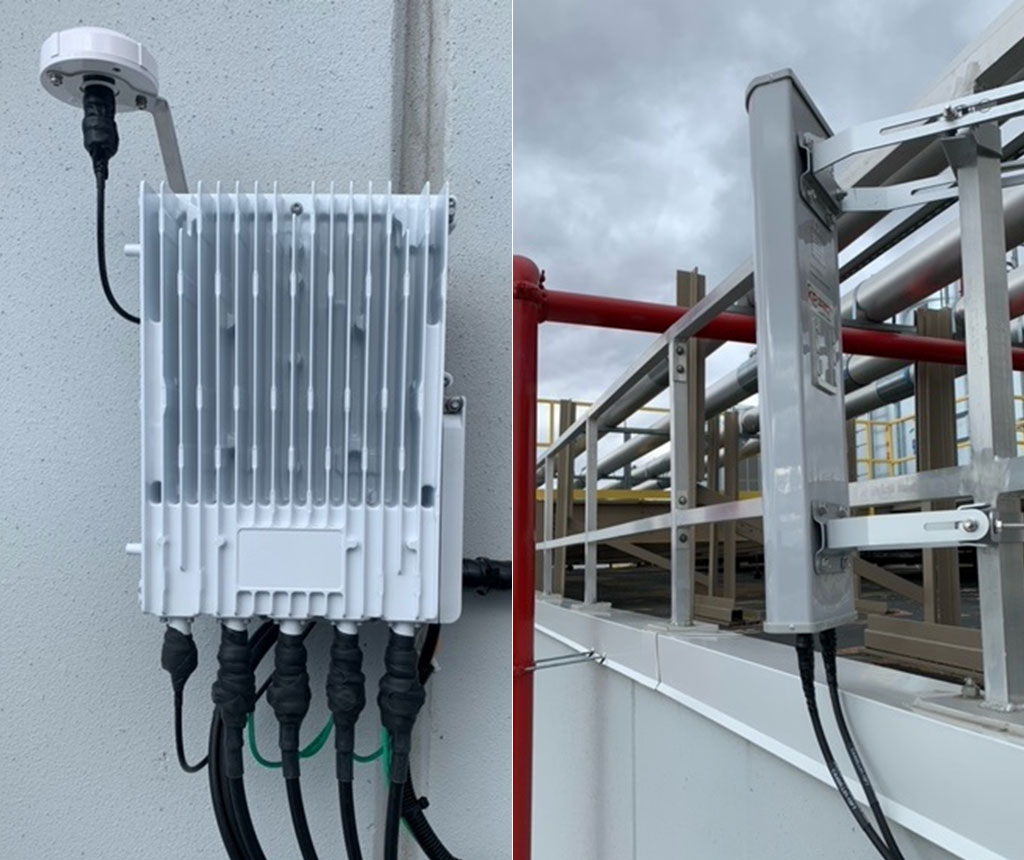For nearly two decades, the Velaspan team has been busy implementing and managing some of the largest and most challenging WiFi networks. But even as we’ve had great success with these networks, in the last 10 years we’ve increasingly run up against the limits of WiFi.
Sometimes it was limited RF coverage – especially for outdoors networks.
Sometimes it’s been a lack mobility for connected robots or forklift trucks.
Sometimes it was interference caused when an overlay WiFi network is deployed.
It was in these times we looked for a complementary technology that would provide a cost-effective solution.
Then we found private cellular networks.
Just like the name sounds, these are networks that take technology used in the latest 4G/5G networks and adapts it to work as an enterprise wireless LAN with a better and stronger radio signal for penetration through walls and obstructions and to cover large areas.
With the FCC’s decision to create the Citizens Broadband Radio Service (CBRS) which provides 150 MHz of regulated unlicensed LTE and 5G radio spectrum in the 3.55 GHz-3.7 GHz bands, these networks are now cost effective for a wide range of business sizes.
Velaspan’s Managed Private Cellular service will bring this to enterprises in a way that solves the use cases that WiFi can’t. First, we’ll design the network and integrate it with your current networks. Then we’ll deploy the network using equipment from our launch partner Celona. Then we’ll manage the network for the next three years.
What does new service mean to me?
A lot if you have a wireless use case challenged by network coverage, signal strength, reliability or lack of mobility that you haven’t been able to solve.
Here’s an example: We worked with a manufacturer of building materials that wanted better coverage in an outdoor inventory storage area where the tall stacks of material were causing wireless connectivity problems that were slowing down its inventory and order picking operations.
We developed a Wi-Fi solution that improved the signal coverage to meet their needs but required 12 pole-mounted access points. We also developed an alternate private LTE solution that required only one radio head to cover the entire warehouse with a signal strong enough to penetrate the “wireless valleys” created by the stacks of building material.

Not only was the private LTE solution better and cheaper it was easier to deploy as it was mounted on the side of a building with easy access to electricity, whereas each of the 12 Wi-Fi APs would have needed trenching to allow electricity to be installed.
Even with great references like this, some customers are not sure that private cellular is for them. We’ve heard from customers who are convinced that they need to wait for an inflection point in the market, or who believe that it’s a great future technology that is reserved for transformative initiatives such as digital transformation or edge computing. But private LTE/5G can also solve today’s real-world use cases as well.
That’s why we’ve structured our MPC as a network as a service. Customers get a 24/7 monitored connectivity service that is free from obsolescence. No matter what’s happening with industry consolidation or new players entering the market – your MPC just works.
We’ve launched a new MPC webpage that we encourage you to check out, and we’ve issued press releases about our partnership with Celona and about the MPC service.
We’re excited to bring you a new solution for challenging wireless network deployments. Please let us know if we can provide you with more MPC details.

